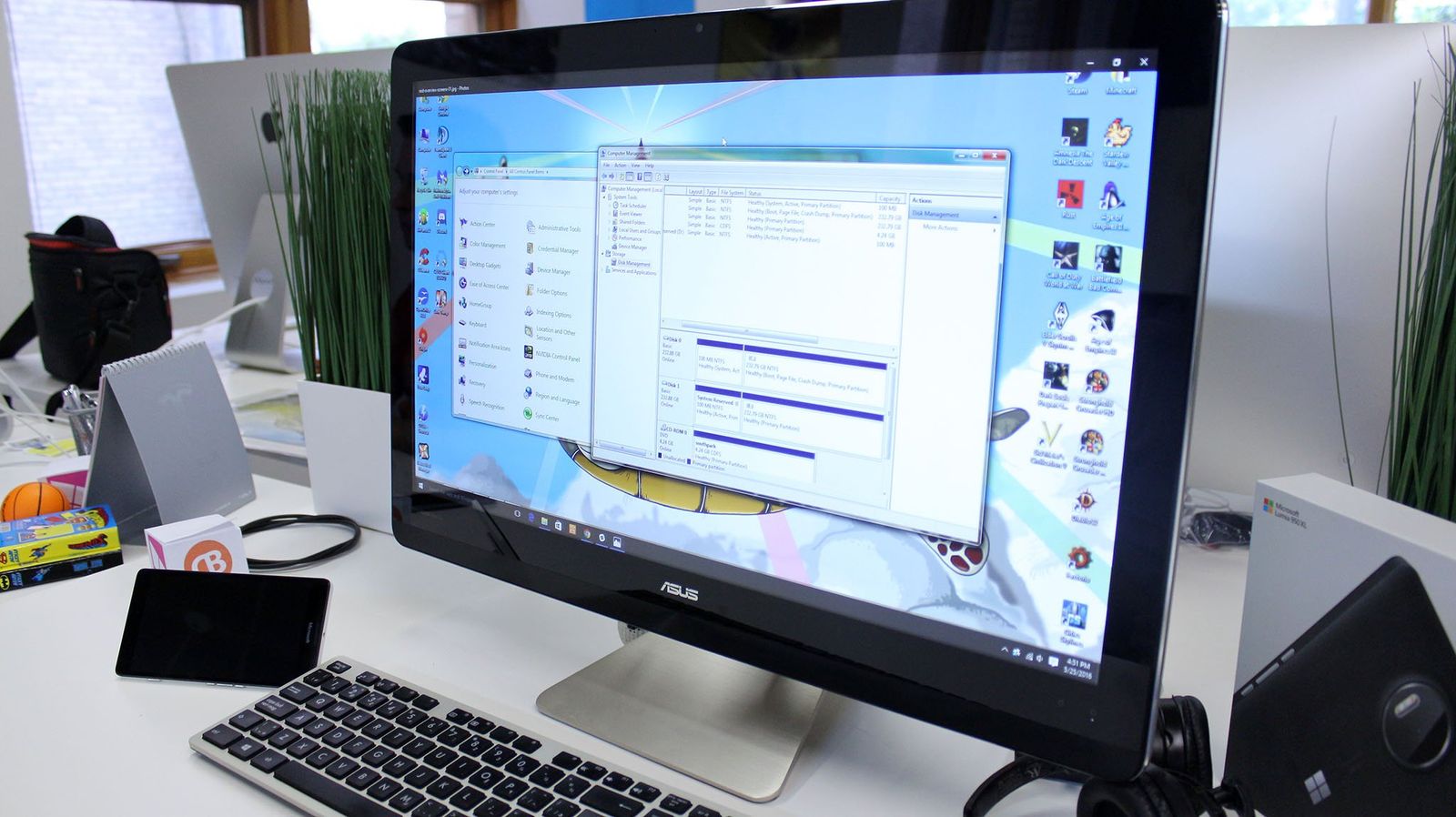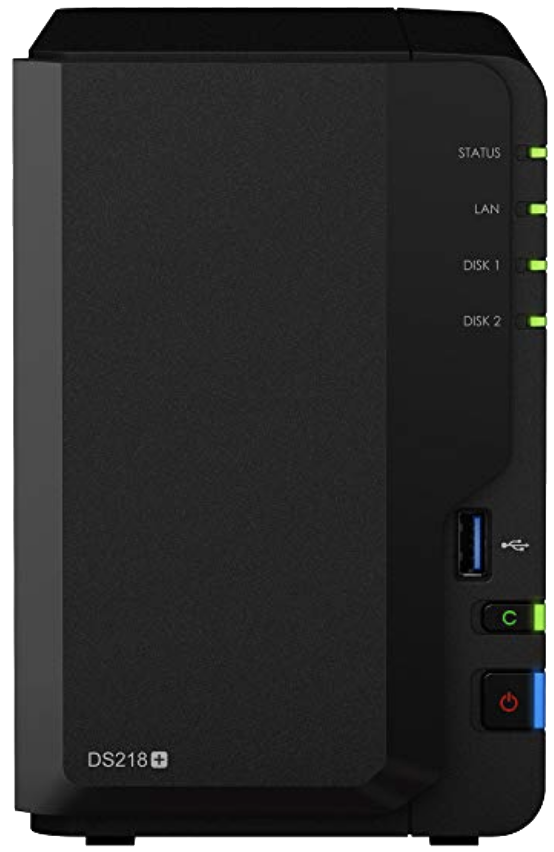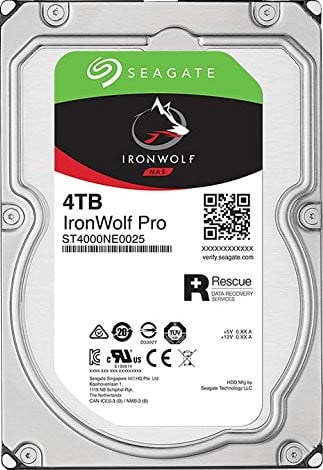Can a Raid Hdd Be Taken Out of Nas and Read

Best answer: Redundant Array of Independent/Inexpensive Disks (RAID) is a technology that allows storing information across multiple hard drives. The purpose of RAID is to achieve information redundancy to reduce data loss and, in a lot of cases, meliorate functioning. The all-time way to get in on the RAID activeness is with a NAS.
- Keen dual-bay NAS: Synology DS218+ ($299 at Amazon)
- NAS for mass storage: Synology DS1618+ ($719 at Amazon)
- Great HDD for RAID: Seagate IronWolf 4TB ($160 at Amazon)
Why RAID?

RAID was created in 1988 in order to deal with costs of high-performing deejay drives. The inventors argued that an assortment of inexpensive disks could outperform a single expensive disk, which was no doubt a huge problem when 10MB of storage cost upwards of $100. RAID allows for data to be stored on multiple disk drives at once, though a RAID setup will appear to, say, Windows x, as a single disk.
A RAID controller — the thing that directs data in and out of storage drives — tin can be based on either software or hardware. In the former case, if you have a few drives set up in a RAID array inside your home PC, information technology's probable handled on a software level with your PC'southward processor (CPU) handling the work. In the latter case, say with an external Network Attached Storage (NAS) enclosure, there will be a dedicated controller card to deal with input and output (I/O) operations of the RAID assortment.
There are several iterations of RAID, each tackling a certain set of problems. RAID 0 was the first version created, and it provides users with fast read and write speeds for improved performance. Despite its name, there is no data redundancy. Information is striped across drives, meaning each drive holds a piece of the overall information. Striping means quicker information access, simply if one drive fails they will all fail, resulting in a loss of data.
Speeds are measured past the number of drives in the RAID 0 assortment, and then consider a RAID 0 assortment with four drives to be four times faster than a single bulldoze. Instead of having a ane-lane highway for all information to travel, at that place are at present multiple lanes, all shipping data back and forth. The performance gains are offset by the lack of information redundancy and the risk of losing all drives in the event of i declining. Other than RAID 0, you'll too oftentimes hear of RAID 1, RAID 5, RAID vi, and RAID x setups.
What is RAID i?
A RAID 1 setup consists of at least two drives that are mirrored to contain the verbal same data. This RAID setup includes fault tolerance, as i drive failing will not issue in the other drives declining likewise. At that place's no striping involved, so as long as 1 drive works, the array will continue to operate, making this a favorite of those who require high reliability. In nigh cases, read performance should be about the same as with a single disk, though there tin be a detrimental effect to write speed and storage capacity.
When information is written to the array, it must be written to each drive independently. Write speeds will therefore only exist as fast as the slowest drive in the array. Likewise, storage capacity is dependent on the size of the smallest disk, so having a 256GB and a 512GB bulldoze means you'll lose half the storage space of the latter hardware. The solution? Stick with like drives — both in performance and size — and you'll have a much better time with a RAID 1 setup.
RAID 1 is generally the most expensive selection since its efficiency can basically exist measured as the number of drives divided by its own number. For example, if yous accept two drives (the minimum number for a RAID setup), you're just getting the storage space of the smallest drive in the setup. This equation is the same no matter how many drives you have. A 10-bulldoze setup will still only have ane drive worth of data stored within, though information technology would have some impressive data redundancy.
What is RAID 5?

If you lot have three drives, RAID 5 is likely your best pick. RAID 5 uses a combination of striping and parity that is distributed beyond drives. In the issue of a drive failure, an Exclusive Or (XOR) logic gate is used to slice together the lost drive using parity information from the other drives. This tin can be accomplished even while the other drives proceed their regular function (though at a slower speed), meaning at that place will be minimal downtime if you lose a bulldoze.
For example, a RAID 5 setup with three drives will have data split between the first 2 drives, with parity on the third. Information and parity are split between the drives equally yous add more information. You lot notwithstanding go to have advantage of the functioning benefit of striping — you have a multi-lane highway shuttling data — plus you shouldn't lose everything in the result of drive failure as you would with a RAID 0 setup. However, a RAID five setup with three drives volition essentially lose 33 percent (or one bulldoze equivalent) of its space for parity functions. You'll also by and large run into slower write speeds due to the parity function.
What is RAID 6?
RAID vi is similar to RAID v, though it uses at least four drives due to a dual parity setup. This means that in a four-drive setup yous lose half of your storage space for parity, though your data volition still be intact in the event of simultaneously losing two drives. Like RAID 5, read speeds are excellent due to striping, though write speeds are more often than not slowed down due to parity. Though information technology requires 4 drives to function, a RAID vi setup is likely best suited for arrays with five or more drives.
What is RAID ten?
RAID x (also known as RAID i+0) is best suited for 4 drives. Instead of relying on either mirroring or striping, it actually involves both, hence the i+0. Data is essentially striped between 2 sets of mirrored disks, creating a arrangement that tin can handle a single bulldoze failure in either set of drives or a simultaneous drive failure in both sets. What it cannot deal with is a simultaneous drive failure of one fix.
For example, if you take 6 bits of data, the offset chip will be mirrored beyond both drives in the get-go set. The next fleck of data volition exist mirrored beyond the second set of drives, the third mirrored across the showtime gear up of drives, and so on. If you lose the first drive, you'll nonetheless be able to access the get-go chip from the other mirror. Losing both drives at one time in a prepare means you lose both mirrors of a scrap, which is where you reach the point of no render. With a RAID 10 setup, you lose fifty percentage of overall storage space due to mirroring, and you lot volition likely see decreased write speeds.
Is RAID correct for you?

RAID was originally invented to cut costs of '80s storage prices while simultaneously accounting for high fail-rates of some early on engineering science. RAID setups are still primarily used in large servers; call back of corporations that require 24/7 access to their critical data. Now though, in an age of cheap bulk storage, RAID setups are often used privately in conjunction with specialized tasks and to avoid monthly fees and privacy concerns surrounding cloud storage services.
How do you get in on the RAID(ing) party? Building a Network Attached Storage (NAS) or buying a pre-built NAS is probable your best bet, although you can configure a software RAID assortment using your standard PC with fastened storage. A NAS is, in its most basic course, a separate slice of hardware running an Bone with the main function to store and manage files. A NAS allows for centralized file management, and with a proper RAID gear up, actress data security and improved performance.
If you lot choose to build your own NAS, you volition ultimately save money and will have more command over the hardware in your system. If that sounds like a daunting task only you lot'd like to endeavor it, we've written a complete guide on edifice your ain NAS. If you have the budget and you lot'd like to buy a pre-built NAS, we have some worthwhile recommendations that volition speedily become you started.
One more thing to note when buying certain Synology NAS systems is the inclusion of proprietary Synology Hybrid RAID (SHR) applied science. SHR and SHR-2 offer protection from unmarried and double drive failures, while also offering easier setup and scale equally they provide support for drives of mixed size and speed. If you're less comfortable dealing with the small details of RAID or have plans to scale up your NAS with multiple drives of differing sizes in the futurity, SHR tin can be a huge boon.
Take hold of a pre-congenital NAS if you'd rather not build i yourself
If you're not comfy edifice your own NAS for RAID, Synology'south DS218+ makes for a great pre-built alternative that can keep upwardly with the needs of a big family or small part. Not only will you be able to keep backups and important documents safe, but also enjoy some media thanks to Plex back up. Information technology tin handle movie and music streaming, surveillance recording and much more.
Best Overall NAS

Synology DS218+
A superb mid-range NAS
Synology's DS218+ is a pricey NAS that fails to come up with whatever hard drives, only the product is a joy to use if you're planning on swapping storage frequently. It houses upgradable RAM, a 64-scrap Intel processor, as well every bit the excellent DSM Bone.
Do you require more than two trophy? Most homeowners don't, which is where the uncommonly good DS218+ comes into play. Those who have an part at abode, or work in 1 for a company volition no doubt require more storage space, and this is when numerous drive bays in the Synology DS1618+ make sense. It too includes SHR support.
Mass storage

Synology DS1618+
The Synology NAS yous need for mass storage
The DS1618+ is a serious NAS that allows you to install up to half dozen difficult drives for ridiculous amounts of storage infinite. It's besides backed by Synology's excellent DSM software and comes with numerous plug-ins for external service back up.
If you're buying a NAS and programme to fix a RAID array, chances are you lot will need to invest in some quality storage. While traditional mechanical drives aren't optimal for NAS operations — continuous operation over prolonged periods volition wear it downwardly — there are enhanced drives available that are much better suited for the task.
Great HDD for RAID

Seagate IronWolf Pro 4TB
A drive built for your NAS
Seagate's IronWolf series is the company's solution for NAS setups, rivaling WD Red. Similar engineering, named AgileArray, is implemented to offer enhanced performance and reliability over desktop drives, and these units tin can be installed in boxes that support up to viii bays. IronWolf Pro is the next pace up with slightly more expensive drives merely increased supported trophy, workload rates, and a limited warranty.
Nosotros may earn a commission for purchases using our links. Learn more.

Buyer's guide
These are the best Netgear routers available now
Love Netgear and want to improve your dwelling house internet? We've rounded up the best routers available at present, whether you're looking to game, prepare a mesh network, or just enjoy lag-free cyberspace in your home.
![]()
Cale Chase
Cale Chase is a staff writer at Windows Central. He focuses mainly on PC, laptop, and accessory coverage, also as the emerging globe of VR. He is an avid PC gamer and multi-platform user, and spends most of his time either tinkering with or writing nigh tech.
comptonperesperess1938.blogspot.com
Source: https://www.windowscentral.com/what-does-raid-mean